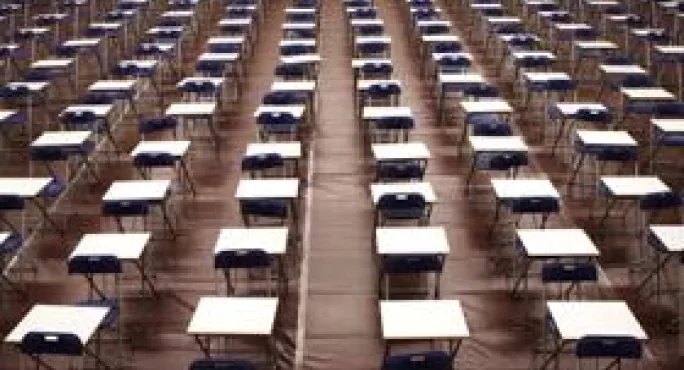Record passes: sciences climb, languages decline

A-level results rose for the 29th successive year this week with a record 97.8 per cent of entries achieving a pass and the proportion of A* grades also the highest yet.
Teachers’ leaders got their retaliation to accusations of dumbing down in first, arguing that this year’s squeeze on university places motivated pupils to work harder than ever.
In fact, the proportion of entries gaining an A grade or better stayed level at 27 per cent. But 8.2 per cent achieved an A*, up by a marginal 0.1 of a percentage point from the grade’s introduction last year.
Association of School and College Leaders general secretary Brian Lightman said: “This year of all years young people have been incredibly focused on getting the results they need.
“They know about the extra demand for university places, with fees going up next year. So it is not a surprise that there is a rise in top grades.”
Beyond the repetitive annual standards debate, and perhaps more significant, was the continued revival of science, maths and technology (STEM) subjects, with entries boosted in maths, further maths, biology, chemistry and physics.
The slump in modern foreign languages showed no sign of abating, with French and German once again showing large drops in entries - down again by 4.7 and 6.9 per cent respectively.
This year Spanish also joined the decline, with a 0.2 per cent drop in entries ending nearly a decade of continuous growth since 2002.
STEM subjects accounted for five of the seven subjects with the biggest entry increases this year. Chemistry moved up two places to sixth in the top 10 most popular subjects, with a 9.15 per cent rise in entries. Maths improved by 7.78 per cent, biology 7.24 and physics 6.08.
Jim Sinclair, director of the Joint Council for Qualifications, said: “The increase in the number of students taking maths and the sciences suggests that young people are listening to the repeated calls from industry for more people to study the STEM subjects.”
Chris Keates, general secretary of teaching union the NASUWT, said: “For us the most important thing is that those subjects are being chosen by pupils across the board and not that boys are being encouraged to do sciences and girls the arts.”
Entries were higher for boys than girls in all STEM subjects except biology. But boys’ higher success rate has been reduced, with the gender gap narrowing at both A and E grades.
Northern Ireland finished top of the three individual nations, but its 8.6 per cent of entries gaining A* grades represents a significant drop from last year’s 9.5 per cent. Wales also had a smaller proportion gaining the top grade, down from 6.5 to 6.3 per cent, while England rose from 8.1 to 8.3.
Some commentators had predicted the overall UK A* pass rate would rise to more than 9 per cent. But the proportion of girls’ entries achieving the new top grade actually dipped from 8.3 to 8.2 per cent.
The gender gap at A* was much lower last year than for A-levels as a whole, and this year boys managed to close it completely, with their top grade entries up from 7.9 to 8.2 per cent.
Professor Alan Smithers of Buckingham University believes the A* is “playing towards boys’ strengths”.
“You have high-performing and low-performing boys and good, hard-working girls,” he said.
Ms Keates said: “I have no problem with the A* but the education system is being dictated by the requirements of universities.
“Whatever schools do, universities are not satisfied. It is not just about the level of qualifications that people have got - universities should also be looking at pupils’ other skills.”
At AS-level, the UK pass rate remained constant at 88.2 per cent, and the proportion of entries gaining A grades dropped slightly from 19.4 to 19.3 per cent.
IN NUMBERSStarred wars
Starred wars
Figures for 2010 are in brackets.
- 97.8 (97.6) per cent of A-level entries gained at least grade E.
- Girls had a higher pass rate - 98.3 (98.1) - than boys, who had 97.3 (97.0).
- 8.2 (8.1) per cent gained an A* grade.
- The A* rate for both genders was also 8.2 per cent. But boys climbed from 7.9 per cent and girls slipped from 8.3.
Original headline: Record pass rate as sciences climb and languages continue decline
Keep reading for just £1 per month
You've reached your limit of free articles this month. Subscribe for £1 per month for three months and get:
- Unlimited access to all Tes magazine content
- Exclusive subscriber-only stories
- Award-winning email newsletters



